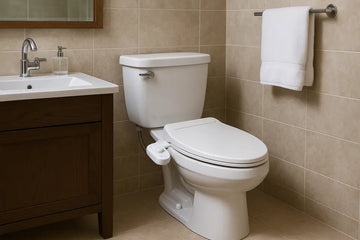The future of toilet technology is poised to revolutionize the way we think about sanitation, comfort, and efficiency. As we move forward, the traditional toilet is being transformed by a wave of innovative solutions aimed at addressing environmental concerns, enhancing user experience, and improving hygiene standards. Industry QA professionals are at the forefront of this transformation, ensuring that these advancements meet the highest quality standards and are safe for public use.
With increasing global emphasis on sustainability and health, the toilet of tomorrow promises to be more than just a place for personal relief. It is set to become an integral part of smart homes, offering features that conserve water, reduce waste, and enhance the overall user experience. Smart toilets, equipped with sensors, automated cleaning systems, and advanced water-saving technologies, are no longer products of science fiction but are rapidly becoming a reality.

Smart Toilets: The Future is Now
Smart toilets are at the forefront of the future of toilet technology. These innovative devices are designed to provide greater convenience and comfort while also addressing environmental concerns. With features such as self-cleaning nozzles, heated seats, and adjustable water pressure, smart toilets offer a personalized bathroom experience.
One of the most significant advantages of smart toilets is their ability to conserve water. Innovations like dual-flush systems and water-saving technologies are increasingly being incorporated into modern toilet designs. These features allow users to choose the amount of water used per flush, significantly reducing water consumption without compromising on performance.
Hygiene and Health Considerations
Hygiene is a major focus in the development of future toilet technology. Automated cleaning systems, including UV sanitation and antimicrobial surfaces, are being integrated into toilet designs to minimize the spread of germs and bacteria. These advancements are essential in maintaining public health standards, especially in high-traffic areas such as airports and shopping malls.
Furthermore, some smart toilets are equipped with health-monitoring features, such as sensors that can analyze urine and stool samples for health indicators. These capabilities offer users a convenient way to monitor their health and detect potential health issues early. For more information on these innovations, check out this article on water-efficient toilets.
Environmental Impact and Sustainability
The environmental impact of traditional toilets is significant, with high water usage and waste production being major concerns. As the demand for sustainable solutions grows, toilet technology is evolving to address these issues. Manufacturers are increasingly focusing on designing toilets that use minimal water and energy, thereby reducing their carbon footprint.
Composting toilets, for example, offer an eco-friendly alternative by turning human waste into usable fertilizer. This not only reduces the need for water but also provides a sustainable solution for waste management. Additionally, waterless urinals and toilets are gaining popularity in commercial spaces, further contributing to water conservation efforts.
Integration with Smart Home Systems
The integration of toilets with smart home systems is another exciting development in the future of toilet technology. By connecting toilets to home automation systems, users can control various features remotely, such as adjusting seat temperature and water pressure. This integration also allows for predictive maintenance, alerting users when repairs or replacements are needed.
Moreover, smart toilets can be programmed to identify individual users and adjust settings accordingly, ensuring a personalized experience for everyone in the household. For more innovative ideas, explore this piece on toilet ideas for the disabled.
The Role of Industry QA in Advancing Toilet Technology
Industry QA plays a crucial role in the advancement of toilet technology. Quality assurance professionals ensure that new products meet safety and performance standards before they reach the market. This is particularly important in the development of smart toilets, where technological complexities and user safety must be carefully balanced.
QA teams conduct rigorous testing to identify potential issues and ensure that products are reliable and user-friendly. By maintaining high standards, Industry QA helps build consumer trust and drives innovation in the toilet technology sector. For more insights on quality assurance in toilet systems, read this article on innovative flushing systems.
Conclusion: Embracing the Future of Toilet Technology
The future of toilet technology is bright, with smart and eco-friendly solutions leading the way. As technology continues to evolve, we can expect toilets to become more efficient, hygienic, and sustainable, ultimately improving our quality of life. Industry QA will remain a key player in this journey, ensuring that these advancements are safe, reliable, and beneficial for users worldwide.
For further reading, explore this article on reinventing the toilet to learn more about the ongoing innovations in toilet technology.

FAQ
What are smart toilets?
Smart toilets are advanced bathroom fixtures equipped with features like self-cleaning nozzles, heated seats, and health-monitoring sensors, designed to enhance convenience, comfort, and hygiene.
How do smart toilets conserve water?
Smart toilets often include dual-flush systems and other water-saving technologies that allow users to control the amount of water used per flush, significantly reducing water consumption.
How does Industry QA contribute to toilet technology?
Industry QA ensures that new toilet technologies meet safety and performance standards through rigorous testing, helping to maintain high quality and build consumer trust.
This article contains affiliate links. We may earn a commission at no extra cost to you.






